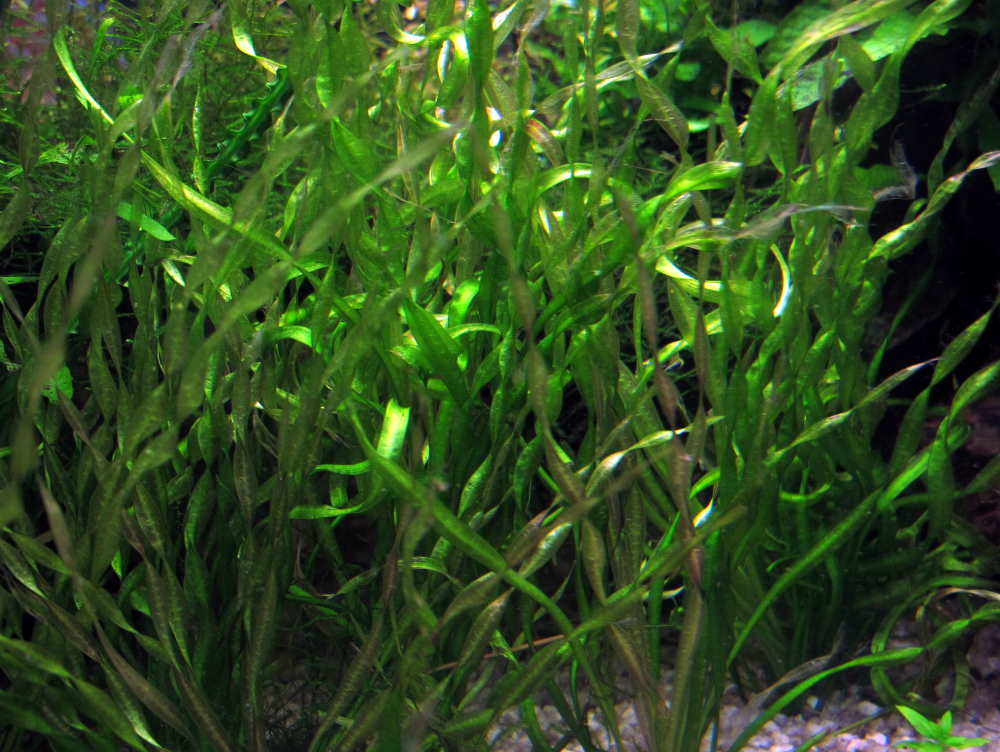Echinodorus Vesuvius – An Oddball Sword Plant with a Twist
Have you ever heard of the narrow-leafed sword plant that grows in a spiral? Meet the Vesuvius sword plant – also known as Echinodorus angustifolia, Echinodorus ‘Vesuvius,’ and Helanthium ‘Vesuvius.’ Similar to corkscrew vallisneria, vesuvius looks like curly underwater grass, but its blades are narrower and grow in a tighter twist. Its common name was chosen because the leaves appear to be rising from the base of the plant much like the smoke wisps spiraling out of Mount Vesuvius. However, be aware that vesuvius is usually grown above water (or emersed) at plant farms, so don’t be confused if you receive a plant with wider leaves and even flower buds. These emersed grown leaves will melt back after you plant them in your aquarium, and then new submersed grown leaves in their slender form will soon appear.
This unusual plant is still relatively new to the aquarium hobby, but it’s easy to grow and adds a lot of interesting texture to a planted tank. Because many aquatic plants look relatively similar, they can end up blending together in an aquarium. Therefore, aquascapers often seek to add variety to the design with attention-grabbing specimens – like red plants, carpeting plants, and unique textures. Vesuvius is an eye-catching addition that fits well in the latter category. Growing to approximately 10 to 12 inches tall, it can be used as a midground plant for medium to large tanks or as a background plant for nano tanks.

If you provide medium light, neutral pH, and root tab fertilizers to your vesuvius, it will readily grow and spread to create a lush jungle look.
While it can take low to high lighting conditions, this plant prefers at least medium amounts of light. Carbon dioxide (CO2) injection is not necessary but will help with faster growth. As with most sword plants, vesuvius is a heavy root feeder that does best when given a nutrient-rich substrate or root tab fertilizers. Once it establishes a good root system and is growing well, it readily reproduces by sending out runners (much like vallisneria and dwarf sagittaria), creating an enchanting gnarled forest in your aquarium.
If you’re looking for a fun and slightly rare plant to add pizzazz to your aquarium, definitely give the vesuvius sword plant a shot. For more information on this species, check out the video tutorial below:
Attributions
Telaga Tenteram Discus by Aldian Prakoso with cropping (CC BY-ND 2.0)
Echinodorus vesuvius by Aldian Prakoso with cropping (CC BY-ND 2.0)




